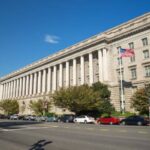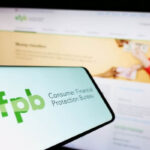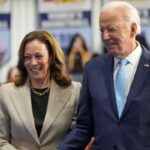The Future of the Public Service Loan Forgiveness Program
President Trump’s latest budget proposal to Congress calls, once again, for the elimination of the Public Service Loan Forgiveness (PSLF) program.
This is the second time Trump has recommended eliminating the program that promised to forgive the balance on student loans after 10 years of on-time payments and service in approved government and charity organizations.
The February budget proposal comes on the heels of the startling news that many in the first group of people qualified for student loan forgiveness under the PSLF program, were being denied.
CNN Money reported that the Department of Education expects fewer than 1,000 borrowers to have the balance of their student loans forgiven in their first year of eligibility, despite about 7,500 applicants.
The blame was put on loan servicers, who may have provided misinformation about borrowers’ qualifications. There have been lawsuits filed against the loan servicers and the Department of Education.
Part of the issue is that PSLF is only good for Direct Federal loans. At the time that the program started, most of the loans issued were Federal Family Education Loans (FFEL). Only about a quarter were Direct Federal loans. Another problem was the limited amount of qualifying repayment plans.
In July of 2010, the government quit offering FFEL loans and now provides four types of qualifying income-based repayment options.
The Future of the PSLF Program Is Uncertain
President Trump has proposed ending PSLF in both of his budget proposals, first in March 2017 and again in February 2018. The latest proposal states the program would end for new borrowers after July 2018, but no legislation has passed to make that official.
If it does pass, borrowers already enrolled in the program should have nothing to worry about. The change would only stop new borrowers from signing up for the program, which started in 2007 under President George W. Bush.
It should also be noted that the presidential budget is essentially meaningless. It exists to identify and recommend the president’s priorities to Congress, and it is Congress that passes the official budget.
President Trump’s Education Proposals
- Eliminate the PSLF program
- End federally subsidized student loans
- Consolidate income-based repayment plans into one standard income-based plan
- Expanding ways federal Pell Grants can be used to pay for post-secondary education
These proposed changes wouldn’t go into effect until July 2019, and ending subsidized loans won’t get much support from Congress. That being said, consolidating the income-based repayment plans could be a possibility.
Under President Trump’s plan, graduates’ monthly payments would be capped at 12.5 percent of their discretionary income, and their outstanding balance would be forgiven after 15 years (this applies to undergraduate loans only).
Discretionary income is the money left over after paying for necessities like rent, utilities and food. The government calculates it as your gross income (after taxes) and 150% of the poverty guideline. Currently 150% of the poverty line for a one-person household is $18,090.
Under the current repayment plans, monthly payments are generally capped at 10% of discretionary income, but debt is forgiven after 20 or 25 years.
A study from NerdWallet found that borrowers would actually pay less under President Trump’s plan than the income-based REPAYE plan. Though, REPAYE would forgive a larger dollar amount.
As a comparison:
President Trump’s plan
- Debt forgiven after 15 years
- Higher monthly payment
- Pay a smaller total dollar amount
- Less debt forgiven
- Debt forgiven after 20-25 years
- Lower monthly payment
- Pay more in total
- More debt forgiven
According to NerdWallet’s calculation, in order to have debt forgiven on $30,100 in loans – average loan debt of the 2015 graduating class – (for both plans) the borrower would need to average under $30k/year in income for 15 years.
Both plans appeal to high-volume borrowers with low income, and there are over 3.3 million borrowers that owe over $75k in student loans.
Again, none of this has been made official yet, but keep an eye out in the news if any changes are made to student loans.
How to Qualify for Public Service Loan Forgiveness:
- Make sure your job is eligible (local, state or federal government organization, 501 (c)3 non-profit, or other not-for-profit organizations that meet requirements)
- Only Direct Federal loans qualify. If you have FFEL loans, you need to consolidate them through the Direct Loan program. However, the 120-payment countdown will restart.
- Enroll in one of the four income-based repayment plans
- Recertify your income and family size each year
- Make 120 consecutive payments
- Fill out and submit this form
The first wave of applicants had their issues because the rules were not clearly stated when the program was instituted. But as time went on, borrowers should have been better informed and order should be restored.
Sources:
- Lobosko, K (2018 February 14) Is Anyone Actually Getting Public Service Loan Forgiveness? Retrieved from http://money.cnn.com/2018/02/02/pf/college/public-service-student-loan-forgiveness/index.html
- U.S. Department of Health and Human Services (2018 January 13) Poverty Guidelines. Retrieved from https://aspe.hhs.gov/poverty-guidelines
- Helhoski, A and Simons, V (2018 February 13) Trump’s Student Loan Plan vs. REPAYE. Retrieved from https://www.nerdwallet.com/article/loans/student-loans/repaye-student-loan-repayment-plan
- Value Penguin (2018) Average Student Loan Debt in America: 2017 Facts & Figures. Retrieved from https://www.valuepenguin.com/average-student-loan-debt








